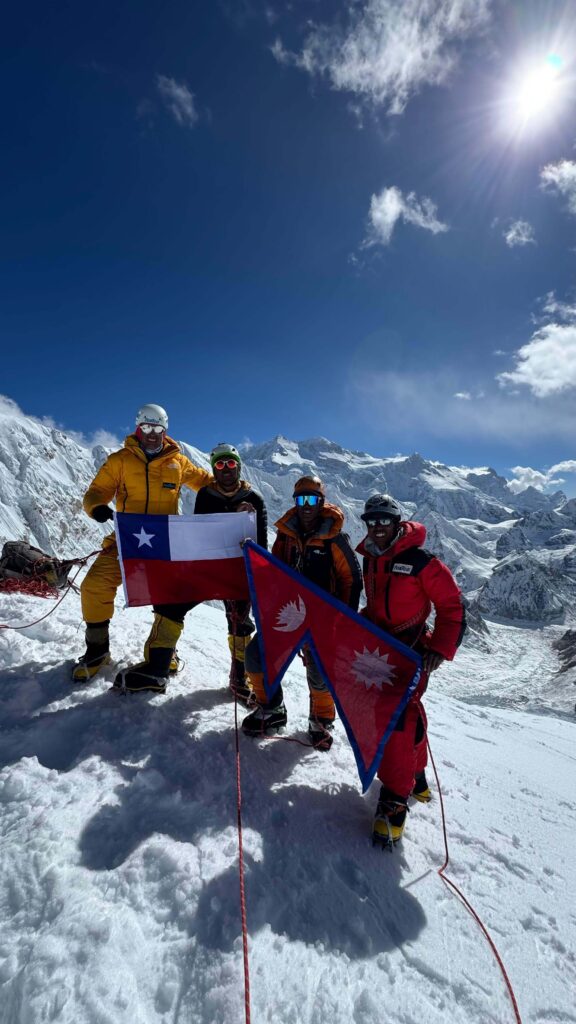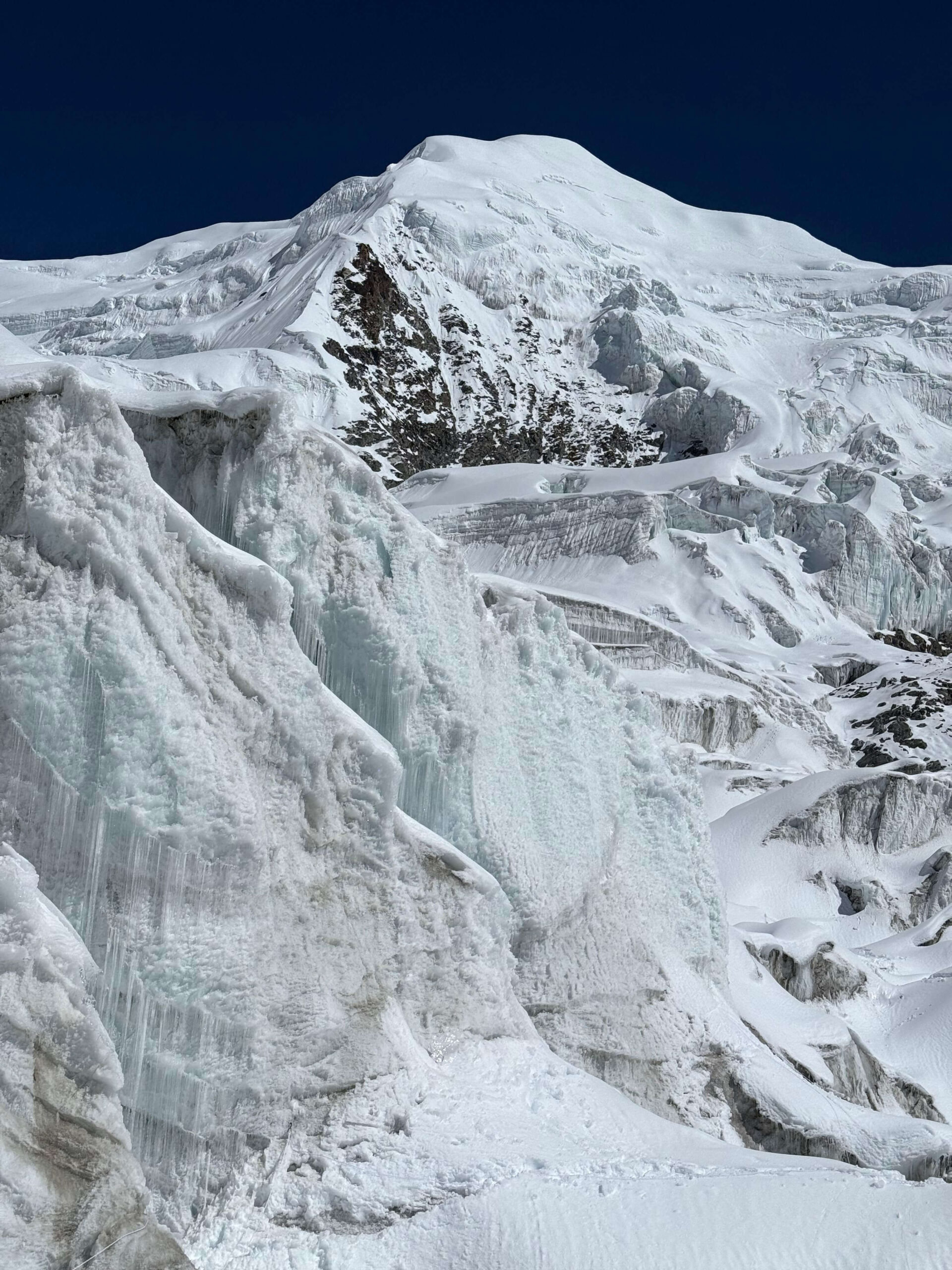Historic First Ascent of Mt. Pathibhara via South-East Face
A five-member international expedition has made history with the first recorded ascent of Mt. Pathibhara (6,686 m) in eastern Nepal, climbing a bold new route up the South-East Face.
The team reached the summit on October 14, 2025, at 1:50 p.m. after an 11-hour push through steep mixed terrain of ice, snow, and rock – a line graded TD/7 in technical difficulty. Their descent followed the same face, using fixed protection and careful rappelling to navigate the heavily crevassed glacier safely.
Opening Nepal’s Hidden Frontier
Mt. Pathibhara, located in the Kanchenjunga-Taplejung region of eastern Nepal (27°48′50″ N / 88°11′12″ E), was officially opened for mountaineering in 2025. Remote and rarely visited, it offers rugged alpine terrain ideal for modern exploration-style climbing. The expedition was organized by Xtreme Climbers Treks & Expeditions and led by Chilean climber Hernán David Leal Barrientos, joined by Nepali Sherpas Lakpa Chhiri Sherpa, Lhakpa Chhiring Sherpa, Kunga Gyaju Sherpa, and Pema Tasi Tamang.
Their climb represents one of the first major mountaineering achievements on newly opened peaks in eastern Nepal -a region long overshadowed by the central Himalaya.
Pioneering the South-East Face
The team established a completely new route, facing unstable rock, loose scree, exposed ice flutings, and complex glaciated slopes. True to the spirit of exploration, the expedition combined modern navigation tools with alpine-style tactics. During reconnaissance, confusion arose over the summit location listed on the permit – Pathibhara South-East (6,868 m). Early mapping led them first to Pathibhara East (6,857 m), prompting an initial scouting trip on October 1 by Sonam, Kunga, and Lhakpa, while Hernán Leal and another Sherpa acclimatized on nearby 6,000-meter peaks and monitored weather patterns.
A snowstorm on October 4 forced the team back to base camp. During this period, satellite-based topographic analysis revealed a previously unnamed peak near Pathibhara Main (7,140 m) at 6,868 m – confirming it as the true South-East Peak. A second reconnaissance on October 8 verified the correct line, and despite losing some cached gear, the climbers pressed on. Roughly 90 percent of the climb was done in pure alpine style, with fixed protection used only on the steepest ice and rock sections.

Photo: The Tourism Times
Camp Setup and Climb Details
Base Camp (5,150 m): Established in a remote glacial basin, used for operations and acclimatization.
High Camp (5,408 m): Reached after six hours over unstable slopes.
Camp I (5,747 m): On a glacier plateau surrounded by crevasses and avalanche terrain, three hours from High Camp.
Camp II (5,845 m): Beneath the steepest part of the face, involving sustained near-vertical ice and snow climbing.
Summit (6,686 m): Reached after an 11-hour push up steep, technical terrain.
The route demanded endurance and composure under constantly changing snow and ice conditions.
Leader’s Vision and Broader Significance
For Hernán Leal, the climb marks his second Himalayan first ascent of 2025. Earlier in March, he became the first to summit Mt. Sharphu IV (6,433 m), also with Xtreme Climbers.
Their success on Pathibhara underscores both the technical potential of eastern Nepal’s hidden peaks and the growing appeal of the Kanchenjunga–Taplejung region for alpine-style expeditions seeking new, unclimbed terrain.
With remote valleys, untouched glaciers, and few fixed routes, the area represents one of Nepal’s last frontiers for sustainable, low-impact mountaineering -blending exploration with conservation.
Source: The Tourism Times

